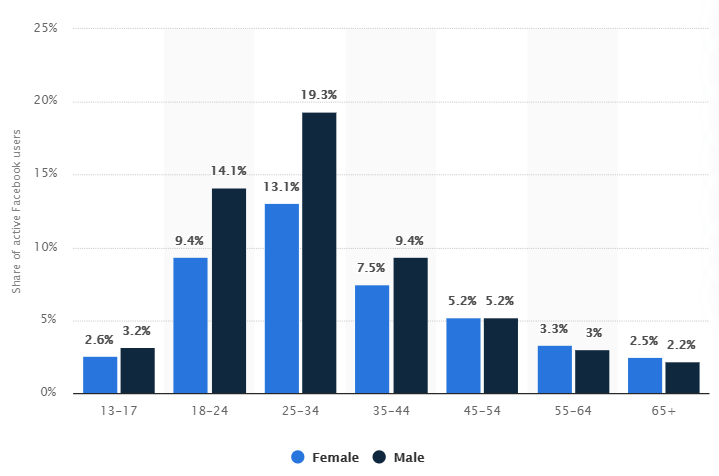As ubiquitous as social media is, every day small business owners around the world are evaluating the pros and cons of making the leap for the first time. Perhaps you’re an entrepreneur who has recently started a small business and you’re trying to figure out which mix of social channels to pursue out of the gate. Or perhaps you’re a small business owner with a couple decades of past successes, but has begun to see sales erode and customers migrate to your competition because of their online engagement. Regardless of the situation, the question of “if” businesses should consider engaging your customers on social media has now firmly been replaced by “when” you should engage. The answer to that question: “now.” If you’re looking for an agency to help you with your social media initiatives, please contact us.
Find Your Customers
There are a few basic tenets of launching a social media initiative that must be considered for it to be effective. The first and most basic premise of social media really isn’t that different than any other marketing campaign: meet your customers where they are. Regardless of whether you’re a new entrepreneur or a seasoned small business owner, you must have some idea of who you are selling to. Let’s assume for a moment that you’re starting with one social media platform (more on this strategy in a moment) and you want to simply understand which platform resonates with which age group. Sprout Social has an excellent resource that provides insights into the age brackets that are frequenting specific platforms:
- Facebook – Largest age group: 25-34, as shown below
- Instagram – Largest age group: 25-34
- Twitter – Largest age group: 30-49
- LinkedIn – Largest age group: 46-55
- Pinterest – Largest age group: 30-49
- TikTok – Largest age group: 18-24
- Snapchat – Largest age group: 13-34

Facebook Demographic Breakdown (Source: Sprout Social)
While this example is an oversimplification of defining a target audience, I share these metrics to encourage any small business owner to dig deeper to understand which platform presents the best probability of reaching your target audience. Tools such as Facebook’s Audience Insights tool are free to use and can provide any small business owner with a very interesting (and actionable) view into their customers.
Start with One
While it may seem tempting to small business owners to roll out three or four new social media platforms right away, in practice I have witnessed this strategy fail time and time again. Why? Social media done well requires a lot of commitment, cross-departmental disciplines and, “worst” of all, a regular (and frequent) cadence of new content — both original as well as response engagements. It reminds me of the question small business owners would ask just 15 or even 10 years ago, “should I be blogging?” I would always answer, “it really depends on whether or not you’re going to be able to keep up with it on a regular cadence, at no more than monthly intervals.” There is really nothing more frustrating or off-putting to a visitor (potential customer) than arriving on your blog or your social media channel to find the most recent post is nine months old. They will not visit again. Ever. Is that a risk you’re willing to take by overextending yourself into too many channels?
Put another way, social media marketing is an aggregation of an incredibly diverse set of skills including:
- Creative graphic design (photo editing, infographic development)
- Video editing and motion graphics animation
- Copy editing
- Technological best practices e.g., hashtagging
- Web development skills
- Metrics and analytics
While many small business owners may be handy at some of these, it is a rare handful who have fully mastered all of these disciplines and can deploy them with acumen, late at night when the shop is closed, the tools put away, the kitchen cleaned up, the accounting done, and the kids put to bed. That is the reality of most small business owners’ “marketing time” and that is not when you’re at your best. Thus, even if you can manage to pull it together, are you really going to be adept at crafting different messages and imagery across a number of social platforms? Even with scheduling platforms such as Hootsuite or Sprout Social this is a tall order. If you’re looking for an agency to help you with your social media initiatives, please contact us.
The answer is to pick one channel, do it well, do it regularly, pay attention, engage with your customers, be a friend, meet them where they are, grow your audience and drive your engagement. Most importantly, set realistic key performance indicators (KPIs) with measurable goals so you know if that channel is creating any kind of return on investment (ROI). While vanity metrics may provide some top line audience growth indicators, more valuable goals for a small business owner working fervently within their social media presence might be:
- Keep response times to inquiries or customer comments less than one day.
- Post at least once per business day.
- Never more than three “promo” posts per week, along with two “industry” or “factoid” type posts to demonstrate to your audience that you are multi-dimensional.
- Determine the number of people who have clicked through from an organic social post to an offering on the website.
- Which types of posts drive the highest engagement? Humorous self-deprecating posts about behind-the-scenes foibles? Or discount codes? Or how-to tips? These are the critical metrics to understand and validate “content versus conversation” as your audience response (measured in no uncertain terms) will tell you specifically which themes and topics are resonating.
An organization’s social media should always be valuable for the end user’s feed. Whether that’s simply by providing picturesque photos or entertaining videos, or by providing reliable resources, information and commentary, brand managers should be contributing something worthwhile to users’ feeds. Regardless of whether you are engaging your audience on Facebook, Instagram, LinkedIn or another platform, it’s critical to remain highly focused and highly engaged, right up until the moment when you launch your second channel.
Expanding Your Reach
Depending on your KPIs and goals for your first foray into social media, you may find yourself launching your second channel in six months or two years. It is not time dependent, but engagement dependent. Just because you’ve reached 1,000 Likes on your Facebook page does not mean it is time to add Twitter, particularly if you only get two “thumbs up” on each daily post.
However, if your small business Facebook page has reached 3,000 followers and 10 percent of them are adding multi-sentence commentary on your posts and another 10 percent are attending your events, then it may be high time to launch your second social channel. The best part? This level of engagement is indicative of business growth, so there is likely some staff available to help out with these tasks instead of what may have been a “lone wolf” approach initially. Additionally, you yourself are no longer a social media newbie, but a seasoned prosumer with some solid experience and understanding of what your audience responds to.
The beauty of this is that you can use your first social media platform success to jump start your second! Think about it: rather than starting from scratch you can now cross-promote your new social channel on the existing one, and vice-versa. Most important of all, you now have metrics from actual community usage that you can mine free of charge using the native insights reporting tools that come with every platform. For example, Facebook can easily show you what time of day (and what day of the week) your audience is consuming your posts. Therefore, if Twitter is your next platform, use that insight from Facebook to time your Tweets. Use insights from all of the above to inform your paid social campaigns – the next step in this natural evolution.
Pay to Play
It would be hard to convince me that there is a simpler advertising methodology than the Facebook “boosted post” mechanism. While Google Ads can reach everyone on the planet and probably even a few trillion others on distant planets (likely in one of their aspirational business goal lists), it is a complex platform that takes a serious investment in time and training to fully understand and leverage. Facebook, on the other hand, provides a simple blue button — “Boost Post” — that takes you to a page where you can play with an audience builder, spend $20 and publish a paid version of your organic post usually in under a minute. I’m not saying you’re going to get it perfect out of the gate, but for its simplicity, ease of deployment and relative effectiveness, it is really the best way to begin exploring the value of paid social media advertising. Again, it is easy to argue that the best ROI for an entry-level Facebook advertiser is not necessarily the actual customer clicks (although those are important at any level) but rather the real-world “on the job training” that such a low-risk ad platform can provide.
Each platform has its own advertising capabilities, and the complexities range widely. Again however, given that Facebook has 2.7 billion users and leverages solid intel from machine learning algorithms, the simple, blue “Boost Post” button is the prevailing recommendation for how small businesses can begin their paid campaigns with minimal risk and relevant results.
Social media can deliver tremendous value for small businesses, but it does require a concerted time and strategy investment from small business owners in order to be successful. Applying the tenets outlined above can help small business owners ensure they start off on the right track. If you’re looking for an agency to help you with your social media initiatives, please contact us.




